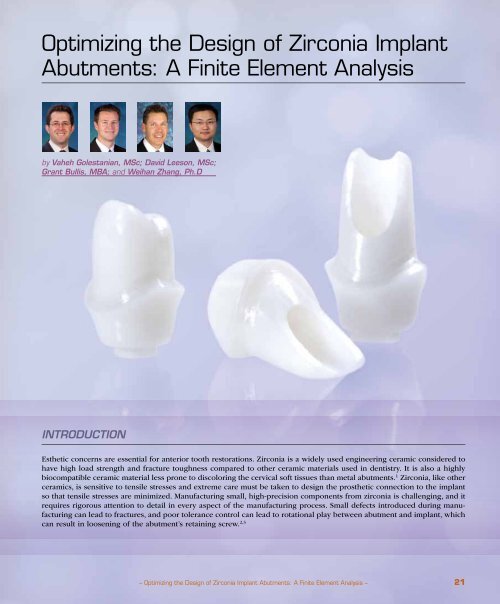PDF Download - Glidewell Dental Labs
PDF Download - Glidewell Dental Labs
PDF Download - Glidewell Dental Labs
You also want an ePaper? Increase the reach of your titles
YUMPU automatically turns print PDFs into web optimized ePapers that Google loves.
Optimizing the Design of Zirconia Implant<br />
Abutments: A Finite Element Analysis<br />
by Vaheh Golestanian, MSc; David Leeson, MSc;<br />
Grant Bullis, MBA; and Weihan Zhang, Ph.D<br />
INTRODUCTION<br />
Esthetic concerns are essential for anterior tooth restorations. Zirconia is a widely used engineering ceramic considered to<br />
have high load strength and fracture toughness compared to other ceramic materials used in dentistry. It is also a highly<br />
biocompatible ceramic material less prone to discoloring the cervical soft tissues than metal abutments. 1 Zirconia, like other<br />
ceramics, is sensitive to tensile stresses and extreme care must be taken to design the prosthetic connection to the implant<br />
so that tensile stresses are minimized. Manufacturing small, high-precision components from zirconia is challenging, and it<br />
requires rigorous attention to detail in every aspect of the manufacturing process. Small defects introduced during manufacturing<br />
can lead to fractures, and poor tolerance control can lead to rotational play between abutment and implant, which<br />
can result in loosening of the abutment’s retaining screw. 2,3<br />
– Optimizing the Design of Zirconia Implant Abutments: A Finite Element Analysis – 21

















